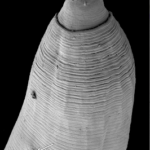The question is whether crops belong in your mouth or your gastank? Bioscience has a interesting article from June with National Geographic following on their heals this month. Both are very interesting and worth the read. Nash in Bioscience lays out what are the potential ill effects of moving to biofuels:
- Diversion of food crops such as corn and soybeans into gas tanks
- Release of greenhouse gases
- Conversion of wildlife habitat into energy-crop farmland
- Accelerating soil depletion
- Drawdown of scarce water resources for irrigation
- Spread of invasive species used as energy crops
- Illusion of sustainability despite extravagant energy consumption
- More use of groundwater-polluting pesticides, herbicides, and fertilizers
This quote really caught my eye.
If the whole of the current US soybean and corn crops were diverted to biofuel production, they would satisfy only about 6 percent of the demand for diesel and 12 percent of the demand for gasoline.
The rest of the article finishes with interesting insights about new methodologies like cellulosic ethanol that would allow any plant material, including garbage, paper, sawdust, etc. to be refined into ethanol and the work by Tilman suggesting that restored prairies could be harvested for biofuels.
…Tilman and collaborators linked his earlier research on prairie perennial grasses to cellulosic ethanol. It makes the prairie ecosystem look like a near-miracle: a source of nonfood energy and wildlife habitat that sharply diminishes greenhouse gas emissions; avoids irrigation, as well as pesticide, herbicide, and fertilizer pollutants; and provides resistance to invasives…If they were grown on the degraded soils set aside under federal conservation programs, they wouldn’t even displace food crops. And, the study concluded, they would produce a net energy gain per hectare 50 percent greater than corn grain ethanol from prime soils. “A first step,” Tilman says,”would be allowing farmers to mow their current Conservation Reserve Program grassland for the energy in its hay, and there’s 35 million or so acres of that land.” It could be seeded with prairie species that would be dominant within five years. During the first decade, they build up an immense carbon-sequestering root system. Root growth levels off, but the soil continues to sequester carbon for about a century. Because few or no resource and energy inputs are needed to prod growth, the study’s LCA balance sheets make prairie-grass ethanol look like a bargain compared with other waste-based biomass sources, such as cornstalks.






Absolutely right. Biofuels are only acceptable as a stopgap on the route to a carbon-free transport system, and then only if they can be produced from waste materials. The idea that meaningful improvements in greenhouse gas balance can be had from biofuel initiatives is not merely incorrect; because of the power of this idea to convince the naive, it is positively dangerous.
I am a very recent addition to your reader list and I am finding your e-mails fascinating. I have been concerned about the idea of bio-fuels ever since I first heard them mentioned. My concern is the reduction of food production as a result of land being turned over to bio-fuel crops. It would be hard for farmers in poorer nations to resist doing this as I am sure bio-fuel crops would earn them more money. There has already been criticism of the West buying luxury, out-of-season foods from countries like India because this has reduced the amount of food being produced for the indigenous population, so how is the bio-fuel business going to accelerate that process?
The news about prairie perennial grasses producing cellulosic ethanol is very exciting as this practice could be extended world-wide beneficially.
Thanks for the links, nothing really ‘new’ to me, but great to see reasoned thinking getting out there more.
One thing that always pops into my head about the ‘restored’ prairie idea (which I generally like) is that it isn’t really restored as such. Humans replace most of the grazers (which are extinct in most places outside of Africa anyway)… but that is why it is so beautiful. The prairie grasses evolved to withstand periodic harvesting. Though we do have to figure out relatively low impact yet efficient ways to do that harvesting if we want to have even have a semblance of restoration.
A final thought. There is not one energy production technology that is best. ‘Site specific’ or using what you have where you are in the most efficient and responsible way is the key. Wind-farms are great where the winds are good so long as there aren’t major bird flyways there too. Microhydro is great if you have rivers, though getting greedy and diverting too much flow and building too big a holding is often bad. Hell, in some places, coal is so plentiful that we could use a liquification process and carbon sequestration and still have it be the most efficient.
The key new technology for our energy future needs to be a much more decentralized generation capacity. Fuels are a related, but separate issue from energy production… and a bit trickier. I really wish people who write on this topic would make the distinction more clearly. For transport, plug-in-hybrids are the next obvious step and a huge improvement (they exist already, just waiting for industry to produce and market them in quantity). These will decouple energy production from fuel for the majority of individual transport, but the step after that will require some new tech. Cellulostic ethanol and/or biodiesel produced in an efficient and relatively low impact way is a definate possibility, but not the only one.
So what could us average consumers do to push this concept? We know that certain politicians would stop anything that would put less dependence on the oil industry because that would take money out of their pockets.